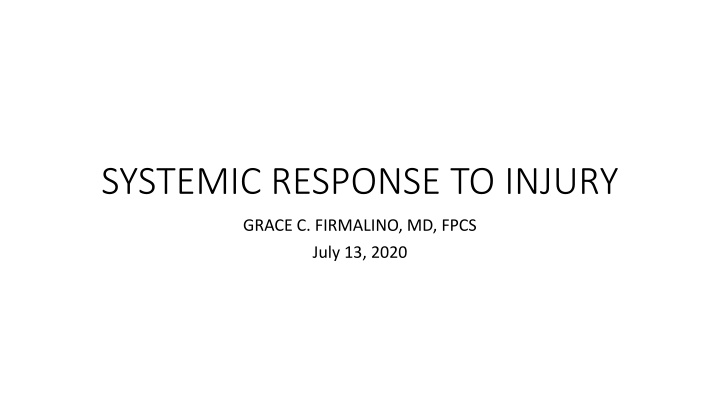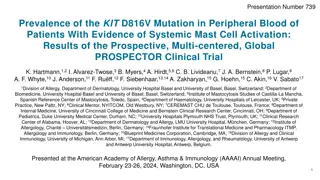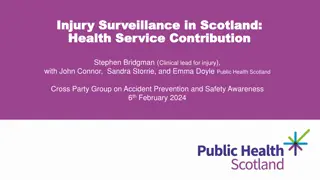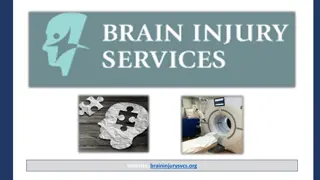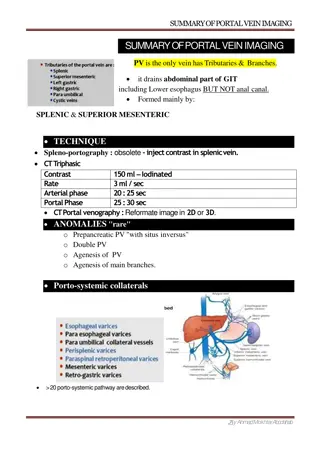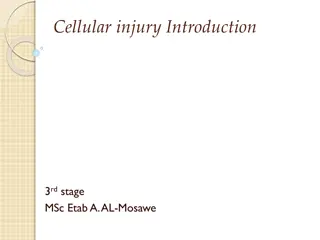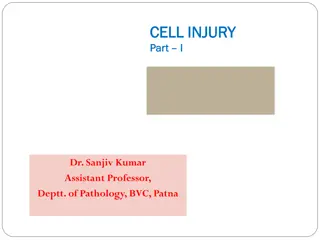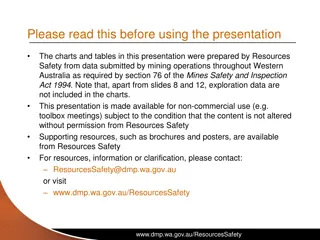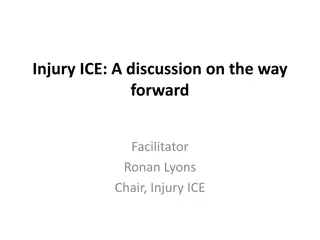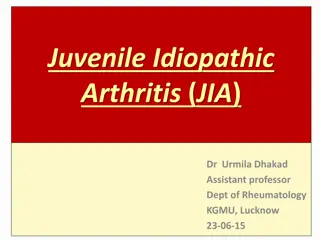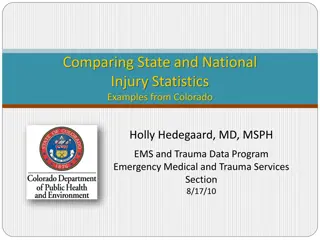SYSTEMIC RESPONSE TO INJURY
Inflammation and systemic response to injury involve acute proinflammatory and anti-inflammatory phases triggered by DAMPs released following tissue injury. The clinical spectrum includes SIRS, sepsis, severe sepsis, and septic shock. DAMPs like HMGB1 activate innate immune cells, while the neuroendocrine response counters inflammation with HPA axis signaling. Cellular stress responses include autophagy, apoptosis, necroptosis, and pyroptosis.
Download Presentation

Please find below an Image/Link to download the presentation.
The content on the website is provided AS IS for your information and personal use only. It may not be sold, licensed, or shared on other websites without obtaining consent from the author.If you encounter any issues during the download, it is possible that the publisher has removed the file from their server.
You are allowed to download the files provided on this website for personal or commercial use, subject to the condition that they are used lawfully. All files are the property of their respective owners.
The content on the website is provided AS IS for your information and personal use only. It may not be sold, licensed, or shared on other websites without obtaining consent from the author.
E N D
Presentation Transcript
SYSTEMIC RESPONSE TO INJURY GRACE C. FIRMALINO, MD, FPCS July 13, 2020
Inflammatory response to injury consequence of local or systemic release of damage-associated molecules for restoration of homeostasis Systemic inflammatory response Acute proinflammatory phase Anti-inflammatory phase Similar to those observed in infection Mediated by damage-associated molecular patterns (DAMPs) released by damaged cells
Clinical spectrum of infection and SIRS Infection Identifiable source of microbial insult SIRS Two or more of the following: - Temp >/= to 38C or </= to 36C - HR >/= 90 beats per min - RR >/= 20 breaths per min or PaCO2 </= 32mmHg or mechanical ventilation - Abnormal WBC count (>/= 12,000/uL or </= 4,000 or >/= 10% immature band forms Sepsis Identifiable source of infection + SIRS Severe sepsis Sepsis + organ dysfunction Septic shock Sepsis + cardiovascular collapse (requiring vasopressor support)
DAMPs Produced following tissue and cellular injury Interact with immune and non-immune cell receptors Initiates sterile systemic inflammatory response following severe traumatic injury Promote activation of innate immune cells and antigen-presenting cells HMGB1, heat shock proteins, mDNA, S100 protein
NEUROENDOCRINE RESPONSE CNS receives information about injury-induced inflammation via soluble mediators and direct neural projections that transmit to regulatory areas of the brain Inflammatory stimuli behavioral changes such as increased sleep, lethargy, reduced appetite, fever Countered by anti-inflammatory signaling involving HPA axis and release of systemic glucocorticoids Two principal pathways Hypothalamic-pituitary-adrenal axis (glucocorticoids) and sympathetic nervous system (catecholamines)
CELLULAR STRESS RESPONSES Autophagy disposing of damaged organelles and debris aggregates Apoptosis clearing of senescent or dysfunctional cells Extrinsic pathway - TNF Intrinsic pathway Bcl-2 Necroptosis premature uncontrolled death Pyroptosis inflammatory form of cell death
MEDIATORS OF INFLAMMATION Cytokines Tumor necrosis factor Interleukin Interferons Eicosanoids Plasma contact system Complement Serotonin Histamine
CELL-MEDIATED INFLAMMATORY RESPONSE Neutrophils Monocytes/macrophages Lymphocytes/T cells Dendritic cells Mast cells Platelets
ENDOTHELIUM-MEDIATED INJURY Vascular endothelium Anticoagulant properties Forms barrier to regulate tissue migration of circulating cells Procoagulant shift after injury microthrombosis Chemokines Platelet activating factor Nitric oxide Endothelins
METABOLISM AFTER INJURY Magnitude of metabolic expenditure over time directly proportional to severity of insult Total energy expenditure dramatically increases after two weeks Increased lipolysis Reduced carbohydrate availability Ketogenesis Peripheral glucose intolerance Protein synthesis and breakdown
NUTRITION IN THE SURGICAL PATIENT Prevent or reverse catabolic effects of disease or injury 25 to 30 kcal/kg (dry or usual body weight) per day 1g/kg per day protein Vitamins and mineral requirements can usually be achieved in average patient Most commercial preparations do not contain Vitamin K/folic acid/B12 Essential fatty acid might be necessary in select patients
NUTRITION IN THE SURGICAL PATIENT ENTERAL Preferred for patients who can tolerate Access: NGT, PEG, NDT/NJT, gastrostomy, jejunostomy PARENTERAL Malnutrition, sepsis, surgical or traumatic injury in seriously ill patients for whom enteral feeding is not possible Usually given through an indwelling catheter Can be used to supplement EN Can be total or partial
REFERENCE: Schwartz s Principles of Surgery 11thedition
